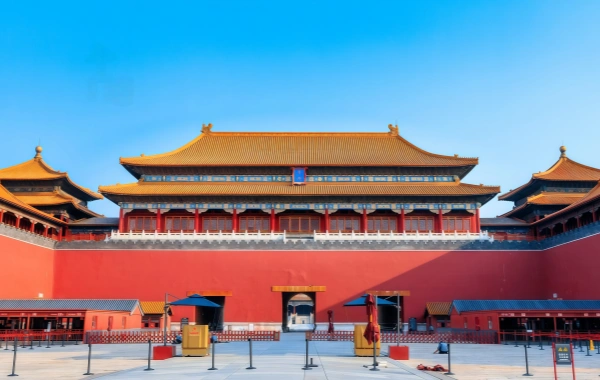Shandong Province, located along China’s eastern coast, is a blend of cultural heritage, natural beauty, and economic vitality. Its well-developed rail network provides efficient and comfortable travel options to both tourists and business travelers, making it a convenient starting point for exploring China’s heartland. From historical sites in Qufu to the coastal beauty of Qingdao, Shandong’s train system offers a seamless way to experience the province's diverse attractions.
1. High-Speed Rail: A Gateway to Shandong’s Major Cities
Shandong is home to some of China’s key industrial and cultural cities, and high-speed rail makes traveling between these destinations fast and convenient. Zhengzhou, Beijing, Shanghai, and Xi’an are all easily accessible by high-speed trains that connect to Qingdao, Jinan, and Weifang. For example, the high-speed journey from Beijing to Qingdao takes around 4.5 hours, while from Shanghai to Jinan, it is just 5 hours, making it easy for business and leisure travelers to visit the province.
Qingdao, a major port city, and Jinan, the provincial capital, serve as important transportation hubs. Jinan East Railway Station and Qingdao Railway Station are the primary departure points for trains heading to and from other major cities in China. The convenience of high-speed rail has made Shandong a key part of the Belt and Road Initiative, strengthening its connectivity with domestic and international markets.
2. Scenic and Leisure Travel: A Blend of History and Nature
While Shandong’s rail network serves the business and industrial sectors, it also opens up opportunities for tourists to explore the province’s rich history and natural beauty. High-speed trains from Jinan to Qufu (the birthplace of Confucius) take around 1 hour, providing easy access to the Confucius Temple, Confucius Mansion, and the Cemeteries of Confucius. These UNESCO World Heritage sites are among China’s most significant cultural landmarks, and their proximity to train stations makes them easily accessible for travelers.
Shandong’s natural landscapes, including Mount Tai (a sacred mountain) and the Yellow Sea coastline, are also well-connected by rail. For example, the train ride to Mount Tai from Tai’an takes only 30 minutes, giving visitors quick access to one of China’s most revered mountains. Similarly, the coastal city of Yantai, known for its beaches and vineyards, is easily reachable from Qingdao via a 2-hour high-speed train ride.
3. Industry and Business Travel
Shandong’s rail system is also essential for industrial and business travel. The province is one of China’s leading manufacturing and export centers, with a strong presence in industries like textiles, machinery, and electronics. Major cities like Jinan, Qingdao, and Weifang have extensive rail networks that connect them to key industrial zones and ports. High-speed trains between Qingdao and Jinan, for instance, make business travel between the two cities both fast and convenient.
4. Local Travel: Connecting Cities and Rural Areas
While high-speed trains provide efficient long-distance travel, Shandong’s rail network also includes slower, conventional trains that reach more rural areas and small towns. These trains provide a vital link to smaller cities and offer an authentic view of Shandong’s rural life, making them an appealing option for travelers who want to experience the province beyond the bustling cities.
5. Ticketing and Practical Tips
Tickets for Shandong’s high-speed trains can be purchased online via platforms like 12306.cn, Ctrip, or at train stations. It’s advisable to book tickets in advance, especially during busy travel seasons such as public holidays. Make sure to bring a valid ID, as it’s required for ticket purchase and entry into stations.
Conclusion
Whether you're traveling for business, leisure, or cultural exploration, Shandong’s well-connected rail system offers an easy and efficient way to explore the province. High-speed trains connect major cities like Qingdao, Jinan, and Weifang, while also offering access to the region's cultural and natural attractions, from the historical landmarks of Qufu to the beauty of Mount Tai. Shandong’s rail network truly provides a comprehensive gateway to experience both the modern industrial prowess and the rich cultural heritage of this important Chinese province.
Related Posts
Create Your Customized Trip
Take about 2 minutes to fill the form to tell us how you like to travel, and get a reply within 1 working day.









